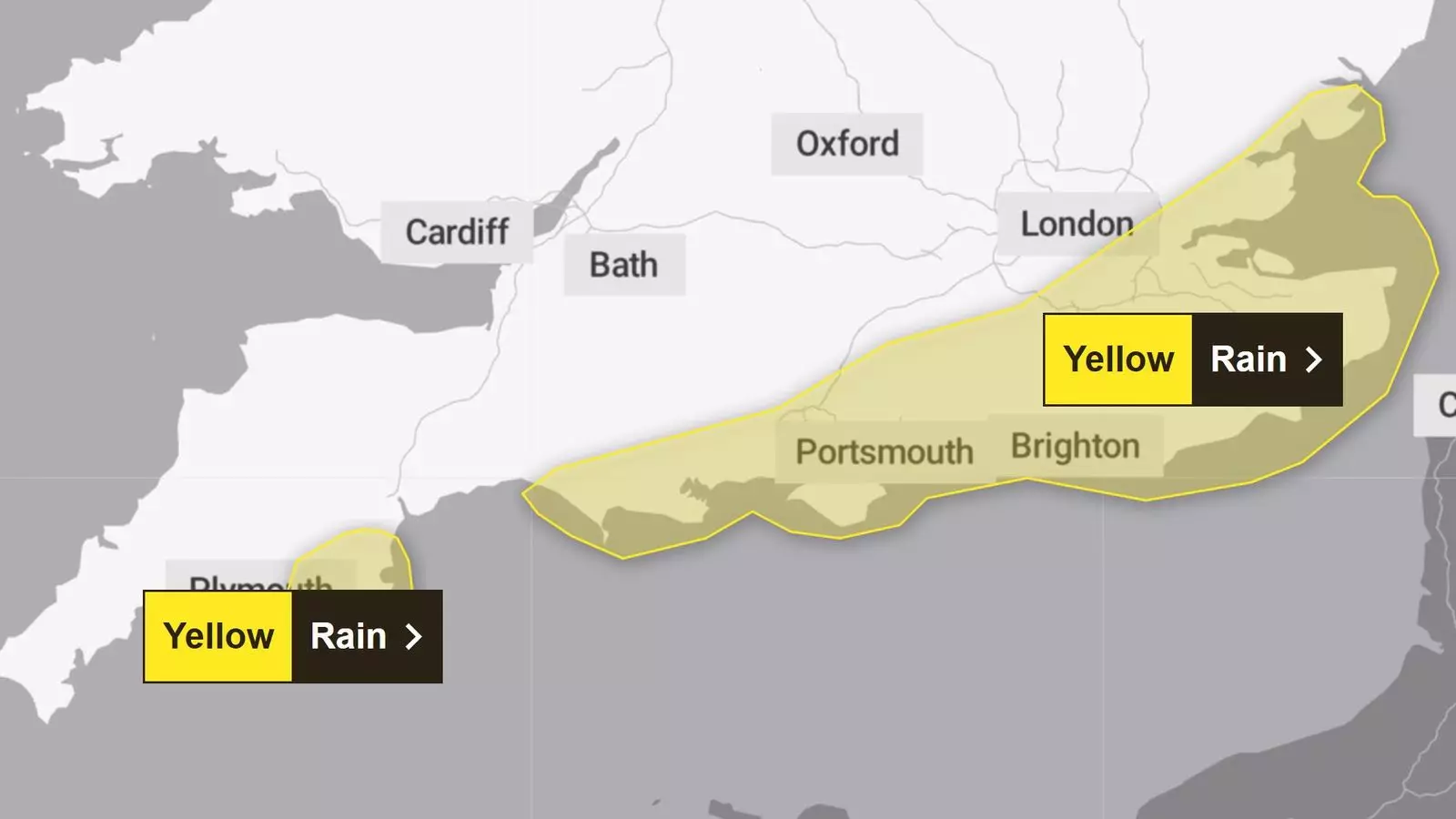As the UK braces itself for the onslaught of Storm Conall, the country is unfortunately no stranger to recent extreme weather events. Following closely on the heels of Storm Bert, which caused significant disruption with its torrential rains and gusty winds over the weekend, Conall is set to exacerbate conditions in southern England. The Dutch weather agency KNMI has officially named this storm, predicting it will bring exceptionally heavy rainfall, with forecasts suggesting up to 50mm (about two inches) in specific areas. The Met Office has already issued a yellow warning for several regions, including Kent, Sussex, and the Isle of Wight, signaling that people must remain vigilant during this precarious time.
These warnings are included within a five-day forecast that stretches from late Tuesday to midday Wednesday, indicating the potential for widespread travel disruptions and localized flooding. As the storm approaches, the population must prepare for possible complications, including impact on transportation networks and everyday activities.
The repercussions of Storm Bert, which battered the region only days earlier, are emblematic of the broader issue of increasing weather volatility. With winds exceeding 80mph and relentless rain transforming streets into rivers, the need for effective disaster response tactics becomes ever more pressing. Communities affected by flooding must not only contend with immediate hazards but also undertake extensive cleanup efforts, addressing damaged infrastructures and restoring public areas. It is critical to consider how these successive weather systems strain local resources and amplify the call for enhanced preparedness.
Residents of southern England, already grappling with the consequences of a recent storm, now face the distressing anticipation of further flooding. Chris Wilding from the Environment Agency predicts “significant flooding impacts” in regions like Northamptonshire while maintaining that areas near the River Severn may experience only minor flooding. This contrast highlights the uneven distribution of impacts across the region, placing certain communities at a higher risk.
The naming of storms, coordinated by the KNMI, the Met Office, and Ireland’s Met Éireann, serves a dual purpose: it aids in public communications while also underscoring the increasing frequency of these weather disturbances. The practice started in 2015 and aligns with an ongoing recognition of severe weather’s proliferation since the onset of autumn. This leads to a notable concern: are these storms manifestations of more significant climate change trends?
With hundreds of flood warnings and alerts still active across the UK as of Tuesday, these extreme weather events must prompt urgent discussions on how society responds not only to immediate threats but also to the underlying causal factors. Indications of climate change, such as warming oceans and shifting weather patterns, mark a growing urgency to reevaluate emergency preparedness legislations, infrastructure efficiency, and community resilience.
As Storm Conall approaches, authorities recommend individuals and communities to stay updated with real-time weather reports and emergency guidelines. The need for adequate flood defenses and public safety measures is paramount in mitigating risks associated with flooding. The urgent nature of these projections serves as a reminder of the critical role that local governments, the Environment Agency, and community stakeholders play in ensuring public safety.
The expectation of rainfall, combined with the lingering effects of previous storms, can create a perfect storm for disaster. Therefore, residents must stay informed and take proactive steps to safeguard their homes and properties. The efficacy of such measures can directly influence the impact of disasters on communities, making it crucial for local leadership to prioritize preparedness initiatives moving forward.
As we face Storm Conall, it is vital to regard the storm not only as a meteorological event but also a pressing reminder of the broader climate realities that shape our lives. With increased vigilance, preparedness, and community cooperation, we stand a better chance at weathering the storms that lie ahead.

